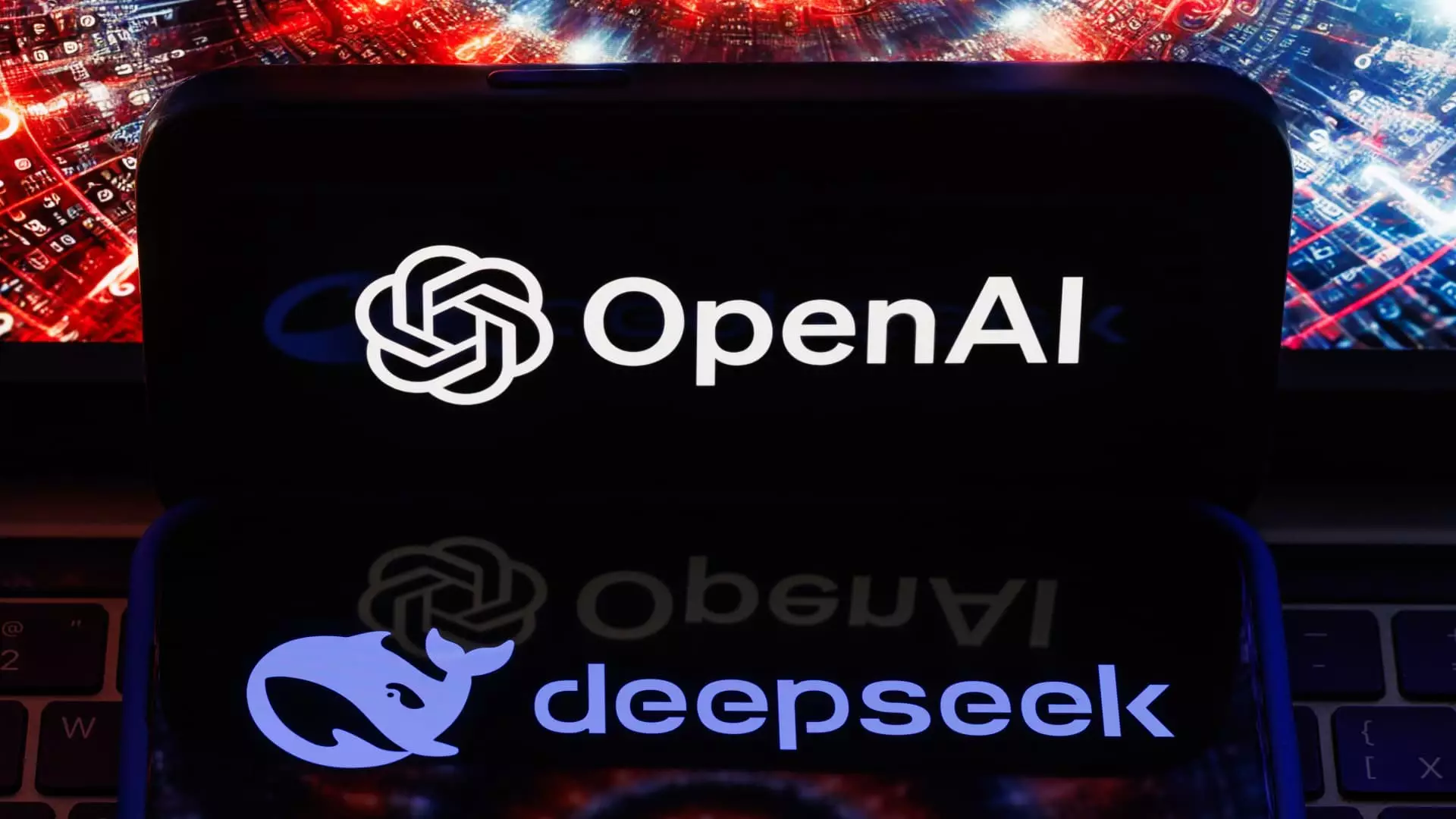The global race for artificial intelligence supremacy is intensifying, with Chinese firm DeepSeek emerging as a formidable contender. The recent AI Action Summit in France highlighted the growing recognition among leading technology executives of DeepSeek’s capabilities and strategies, reflecting a significant shift in the discourse surrounding AI innovation. As conversations about the U.S. and China’s roles in this arena evolve, DeepSeek’s advancements cannot be easily dismissed.
DeepSeek’s Revolutionary Model: A Game-Changer?
DeepSeek recently garnered attention with its groundbreaking announcement regarding the R1 model, which reportedly achieved competitive performance with a budget significantly lower than that of Western counterparts. The model’s total training cost was revealed to be under $6 million, contrasting starkly with the hefty investments of leading tech giants like OpenAI and Anthropic, which often expend billions. This affordability raises critical questions about traditional assumptions in the AI sector, particularly regarding the need for immense financial resources and high-end hardware, such as Nvidia GPUs, to drive AI development.
Chris Lehane, OpenAI’s chief global affairs officer, expressed concern and excitement over DeepSeek’s capabilities, remarking on the palpable competition emerging between democratic and authoritarian models of AI governance. He underscored that it is essential for stakeholders in the U.S. to acknowledge this shift in paradigm, as DeepSeek’s models operate under a distinct approach that challenges the status quo.
Despite DeepSeek’s impressive technological strides, challenges surrounding its credibility and ethical implications have emerged. Critics point to the censorship of sensitive historical topics within its AI framework. An example provided during discussions involved the 1989 Tiananmen Square massacre, where the AI declined to engage with the topic, suggesting a tailored narrative that reflects the broader censorship practices associated with the Chinese political landscape.
This aspect raises significant alarms among experts in the field about the potential consequences of an AI landscape driven by models that may prioritize specific narratives while neglecting historical facts. Many in the tech community voice that while capabilities may exist, they come with a hefty ethical cost that could reshape user trust and the application of AI technologies.
Notably, while many executives acknowledged DeepSeek’s advancements, they maintained skepticism about the commercial impact on established AI companies. Some industry leaders, including Abishur Prakash of The Geopolitical Business, highlighted a fundamental misunderstanding in the West regarding China’s progress in AI technology. He suggested that the traditional narrative of the U.S. as the unassailable leader in technology is no longer tenable; the narrative itself has to be revised.
Evidence indicates that DeepSeek’s achievements might not be entirely organic but could stem from leveraging existing data sets derived from more advanced U.S. AI systems through a process called distillation. This practice involves gaining insights and training capabilities from pre-existing, larger models, which raises questions about originality and intellectual property—a point acknowledged by OpenAI in their explorations of DeepSeek’s methods.
Another layer to the discussion involves the balance between efficiency and the prevalent belief that scaling up model sizes is the optimal route to improved AI performance. Experts such as Victor Riparbelli from Synthesia posit that although DeepSeek’s developments challenge long-held convictions about AI scaling, a significant migration of user reliance from established entities to newcomers like DeepSeek is unlikely at this stage. The inertia of existing systems remains a powerful force, still favoring larger models that have, so far, demonstrated superior reliability and performance.
Meredith Whitaker, president of the Signal Foundation, further asserted that the current market dynamics still heavily favor larger programs and architectures, driven by the tendency that “bigger is better”. This encapsulates a prevailing skepticism about whether smaller models like DeepSeek’s can truly shift the existing balance of power in this competitive landscape.
While DeepSeek emerges as a noteworthy player in the world of AI, the implications of its advancements extend beyond mere technological capabilities. The intersection of factors involving funding, regional competition, ethical challenges, and the future of AI itself complicates the narrative surrounding this unfolding rivalry. Stakeholders must navigate this evolving tapestry cautiously, recognizing both the opportunities and challenges that innovative models present, particularly as global dynamics shift toward a more competitive landscape in artificial intelligence. The potential for real transformation in the industry exists, but its translation into operational change remains to be seen as the narrative continues to develop in the face of these monumental advancements.

